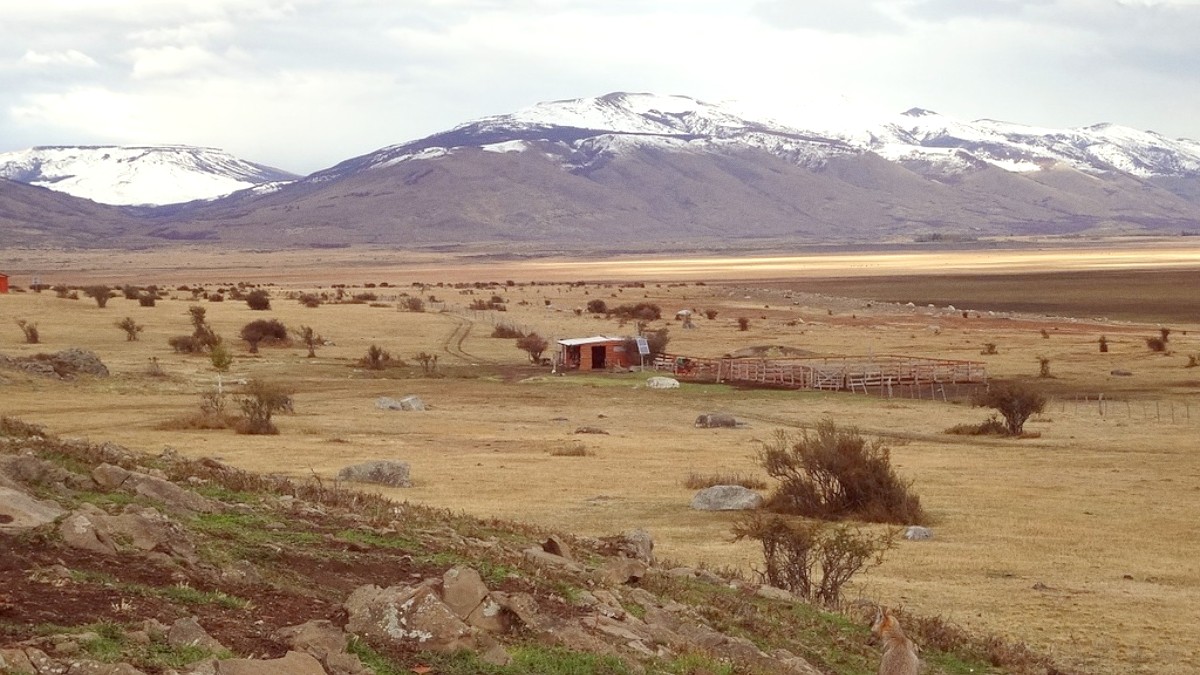
Patagonia, Argentina
Patagonian cuisine draws heavily from abundant natural resources, mainly lamb and trout from pristine lakes.
Cooking methods often feature open-fire grilling, a nod to gaucho culture. Food generally features hearty, comforting attributes, suiting a cold, vast environment.
The region's star, known for flavor and tenderness, often slow-roasted "al asador" over an open fire.
Freshwater trout from Lago Argentino and local lakes, commonly grilled or pan-fried.
Wild berries, especially the calafate berry, feature prominently in desserts, jams, and liqueurs.
The quintessential Patagonian dish: a whole lamb slow-roasted over an open flame, resulting in incredibly tender and flavorful meat.
Find it at traditional parrillas like La Tablita or Don Pichon.
Grilled or pan-fried trout, fresh from local lakes, a delicious alternative to lamb, often served with vegetables or potatoes.
Many restaurants feature this dish.
Guiso de Lentejas is a hearty lentil stew. Locro is a thick stew with corn, beans, potatoes, and meats, sometimes available in traditional eateries.
Good for colder weather.
Savory pastries with various fillings (meat, cheese). Choripán: grilled chorizo in crusty bread, often with chimichurri. Panchos: Argentine hot dogs.
Alfajores: shortbread cookies filled with dulce de leche. Calafate Ice Cream: an unique, must-try flavor from the local berry.
La Tablita: A top pick for traditional Patagonian lamb in a rustic setting. Reservations are frequently advisable during high season. Isabel Restaurant (at Kau Yatún Hotel): Features a refined experience with sophisticated Patagonian and international cuisine.
Don Pichon: Another popular option for lamb and Argentine dishes, often with great lake or town views. Casimiro Biguá: Known for its excellent parrilla (grill) selection, including lamb and beef. Mi Rancho: A smaller, cozy spot for good home-style Patagonian food.
Numerous pizzerias, empanada shops, and small cafes dot Avenida del Libertador. These present quick, affordable meals. Supermarkets like La Anónima offer great options for self-catering, including fresh produce, bread, and cheeses.
A traditional Patagonian lamb feast at a ranch outside town offers an unique dining concept, combining food with rural culture and scenery.
Often pre-booking, transportation included.
Many establishments on higher ground or along the lakefront feature stunning Lago Argentino views, elevating the meal's atmosphere.
Scenic backdrop for your dining.
La Anónima stocks groceries for self-catering.
Find local cheeses, chocolates, and wines.
Specialized stores for Argentine and Patagonian wines.
Large traditional fresh produce markets are not common.
Awareness of gluten-free needs grows in Argentina. "Sin TACC" (Without Wheat, Oats, Barley, Rye) describes gluten-free products. Some restaurants feature gluten-free bread or pasta, always confirm.
Look for "Sin TACC" labels.
For other allergens, carrying a Translation card clearly explaining your dietary restrictions in Spanish is advisable.
This aids communication with restaurant staff.
Before your visit, search for El Calafate restaurants mentioning vegetarian, vegan, or gluten-free options in their reviews or menus.
La Anónima and smaller grocery stores present a good selection of ingredients for self-catering, frequently the most reliable option for specific dietary needs.
Specific cooking classes focused solely on El Calafate cuisine are fewer. Some estancias may offer glimpses into traditional Patagonian cooking, like "cordero al asador," as part of their day tours.
Several estancias near El Calafate feature day tours that include traditional lamb roasting demonstrations. This provides a direct connection to the Patagonian lamb source. Small producers also sell artisanal jams or chocolates in town.
El Calafate occasionally hosts local food fairs, especially during summer or as part of the Fiesta Nacional del Lago Argentino in February. These present opportunities to sample local specialties.
Explore smaller, less touristy cafes for authentic pastries and coffee. Great for a local breakfast or afternoon "merienda."
Discover hidden treats.
During peak season, occasional food trucks or temporary stands may appear, offering quick and diverse local bites, especially during events.
Spontaneous street food.
Enjoy the local calafate berry in various forms: ice cream, jams, and liqueurs, a regional signature.
Freshly caught trout, often grilled, presents a delicious and lighter alternative to traditional meat dishes.
This caramelized milk spread graces countless Argentine desserts and pastries, a sweet national obsession.
Argentina's main meal is dinner, which begins late, usually after 8 PM. Many kitchens stay open past midnight in high season. Consider eating earlier if you prefer a quieter atmosphere.